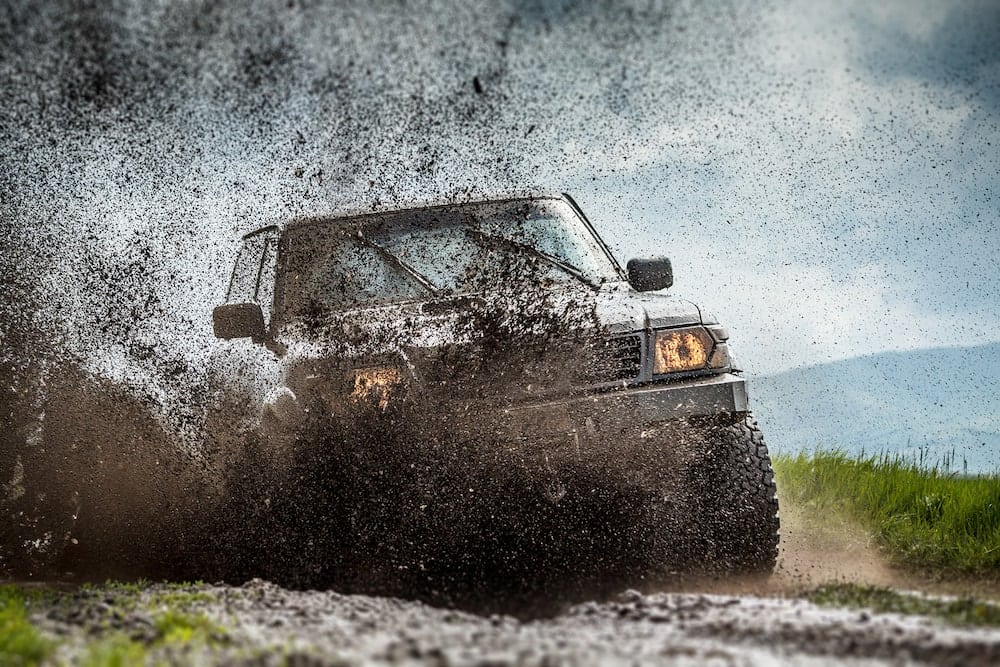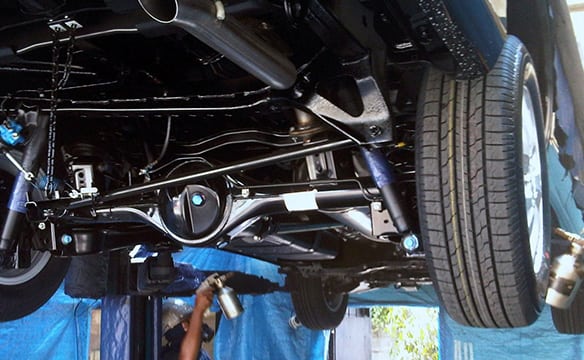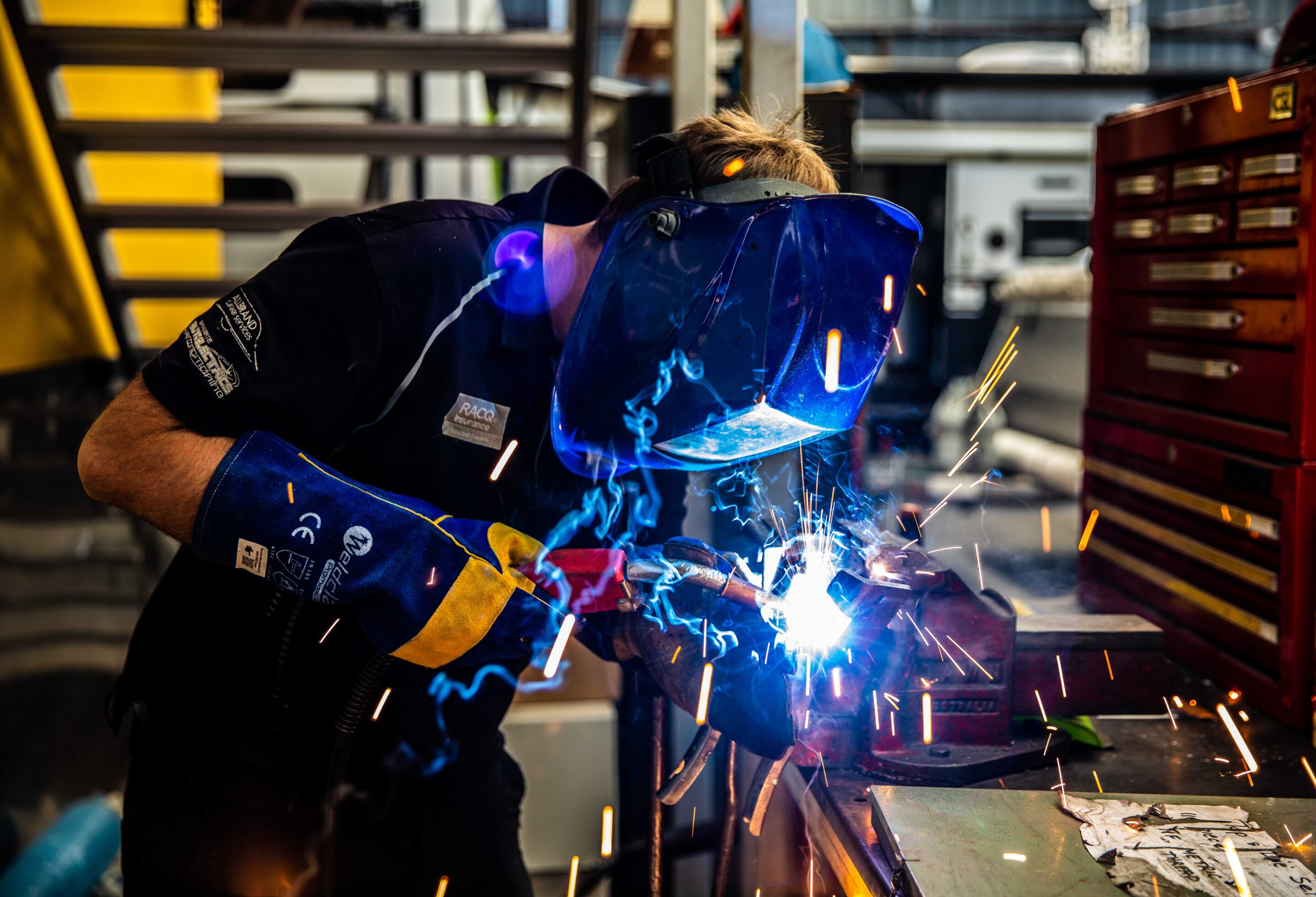Going off-road brings a lot of adventure and excitement along with it. The chance to get off the grid, get away from the crowds and explore the terrain. It also comes at a price. Putting you in situations where your vehicle and equipment may experience some damage.
During 4WDing, road surfaces can get thrown up, along with any obstacles or debris, which can lead to expensive damage caused to the underbody of your beloved 4×4.
If you’re driving through mud, water, or sand, over branches on the roadside, or have experienced driving over dirt or gravel roads with pieces flicking underneath your car, then it’s highly likely that part of the great outdoors is still driving around with you today.
Most modernised cars have been well treated before leaving the factory floor. Exposed areas under the vehicle are protected with coated metal which is resistant to corrosion.
So why is extra rust protection necessary?
Cars are now more protected than ever before, however they still are not entirely immune to corrosion happening over time. All it takes is for some small chips from debris or stones on the road for the metal on the underside of the car to be exposed to rust.
Even worse is the constant exposure to the elements – such as the beach, or driving through water such as a creek crossing.
Here are 4 great tips to stop rust eating your 4×4:

1. Extra Rust Protection & Wax Coating
By applying a rustproof treatment and performing underbody chassis corrosion protection, you can give yourself peace of mind knowing that your vehicle is protected and prepared for any environment, even in the harshest environments found in off-roading adventures.
In this process, surface rust deposits are removed through a combination of blasting and by hand, then specialist rust converter and primer is applied.
Next, a wax coating is applied to the underbody, box sections, vehicle chassis, sills and door pillars, as well as any vehicle panel cavity areas inside the 4WD. Lastly, an underbody sealant is applied, which adds protection from stone chips, and surface rainwater. An additional benefit of the glossy black sealant used is that it possesses excellent sound deadening features, to let you enjoy your trip in comfort.

2. Chemical Rust Treatments
Chemical Treatments are one of the primary ways of protecting your vehicle against rust. They work by spraying a waxy coating against any exposed metal which adds another layer of protection against rust.
There are some panels (such as the inner part of the roof) which are unable to be sprayed. Luckily, these areas are rarely exposed to any elements which would make rusting possible.
Chemical Treatments are usually completed before assembling the vehicle in the factory. However it is still possible to apply to a car successfully after the assembly has occurred.

4. Regularly Cleaning your 4×4
The first step to preventing a buildup of corrosion and rust from damaging your 4WD is to make sure that you keep it well maintained. Don’t allow rust to eat your beloved 4×4!
Cleaning and polishing your ride goes without saying. But, if you’ve come back from a holiday, or a day out off the beaten path, then it’s critical to be sure to wash the underbody. Don’t put it off, doing it ASAP will prevent any chance of rust starting to form.
As well as the underbody of your 4×4, be sure to pay close attention to inside the wheel wells. This is often an overlooked area and is one of the first areas which will show signs of rust on a 4×4. Also clean and polish the sill panels, and if you’ve been off road, the chassis rails too.
Next, use a brush and focus on cleaning the door drain holes, then take a thin wire and poke it inside to help eliminate and clear out any build up of grime or gunk. It’s common for dirt and mud to get clogged in these holes which then causes water to form inside the panel.

Prevent Rust Before It Occurs
By taking preventative measures against rust, you can ensure your 4×4 is ready to go wherever you are. Thoroughly enjoy yourself through the terrain and rural areas which are scattered with rough ground, poor drainage, and perhaps flood-affected areas, knowing that your vehicle is fully protected.
In the long term, rust protection also helps against stone chips, debris, and dirt. It prevents them from getting underneath the 4×4 and goes a long way to stopping rust and corrosion.
What If You Already Have Rust
Rust can spread out of control like an infection, so it’s critical to deal with it as soon as it is first detected. It’s possible to scrape off any loose rust pieces on your 4×4 with a razor blade to slow down the rusting process. Next, thoroughly scrub the affected area using soap and warm water. Now it’s time to apply a metal conditioner to the area to stop any further rusting from occurring. Lastly, if required, put a new coat of paint on the area.

Expert Advice
If you are concerned about potential rust building up in your beloved 4×4 and want to know your rust protection options, there is an easy way. Contact Sandgate Auto Electrics or visit us to receive expert advice.
drain holes, then take a thin wire and poke it inside to help eliminate and clear out any build up of grime or gunk. It’s common for dirt and mud to get clogged in these holes which then causes water to form inside the panel.

